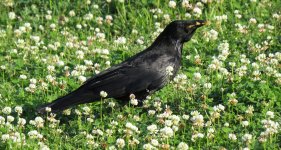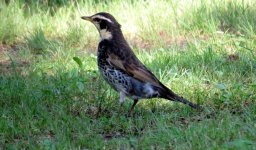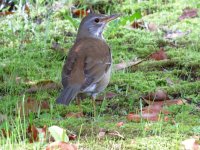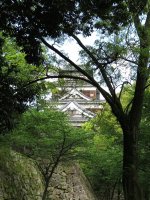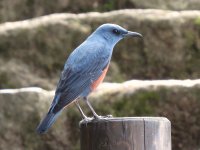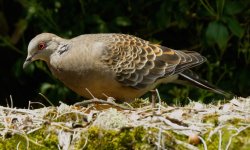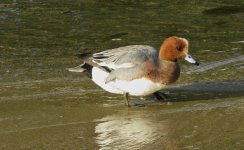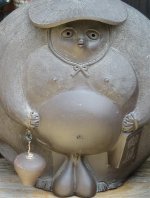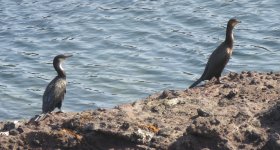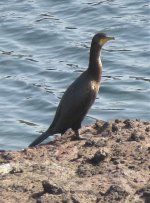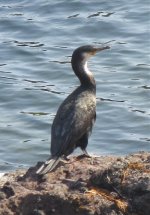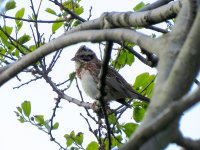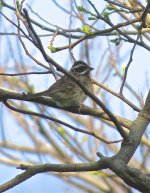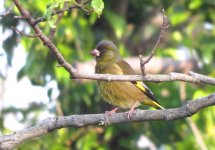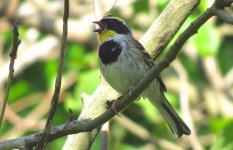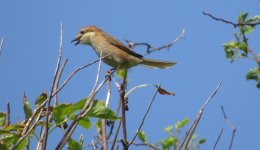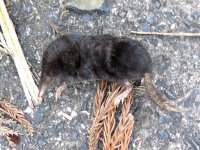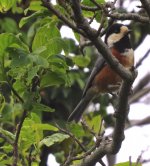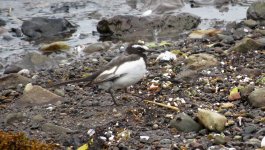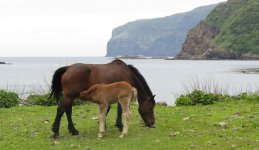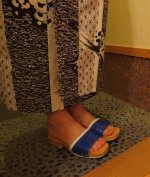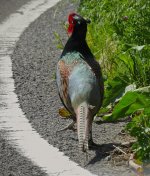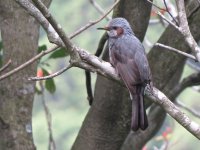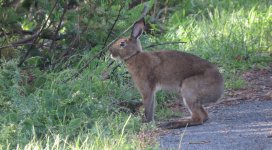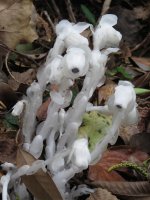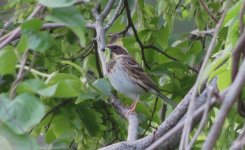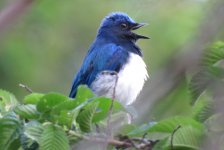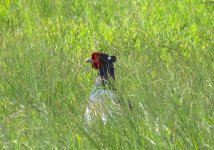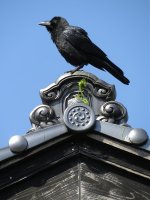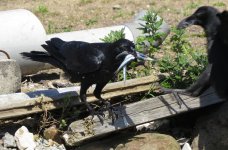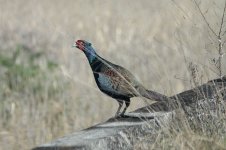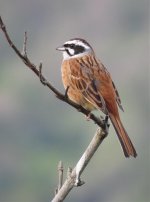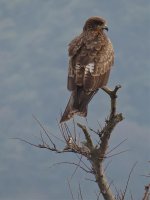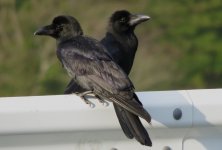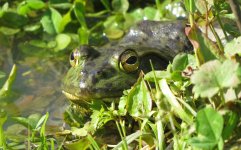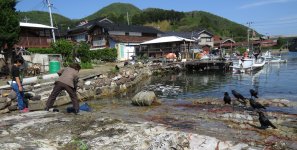MKinHK
Mike Kilburn

Last Thursday I started my part-birding part-tourist visit to western Honshu (Hiroshima, the Oki Islands (staying on Nishinoshima) and Onomichi) in Japan with a walk north along the river in central Hiroshima to Central Park, picking up Grey Heron on the river, a dozen or so White-cheeked Starlings which zipped overhead towards the Atom Bomb Dome, and a Carrion Crow scavenging on a clover-strewn lawn before finding a group of six or seven Dusky Thrushes – most of which were in full-blown black and white breeding plumage – beneath the trees at the northwest corner of the park.
Amongst them was a Grey-backed Thrush – indeed a pristine male – which turns out to have been the first for Hiroshima! The rarity was a little wasted on me as I‘ve had well over 100 bird days of Grey-backed Thrushes on my patch this winter! Other birds here included a couple of Long-tailed Tits and a neat Oriental Turtle Dove waddling complacently down the path in front of me as I headed along the northern edge of the park.
I picked up a couple of grotty female Black-faced Buntings in the northeast corner before heading over to the grounds of Hiroshima Castle. A Little Egret and a Japanese Cormorant were in the moat and I failed to get onto a flock of twenty-odd Brown-eared Bulbuls as they took of from the top of a flowering tree. There were more Long-tailed Tits along with a confiding Pale Thrush, some showy Japanese Tits (including a begging juvenile) and an Eastern Crowned Warbler. The birds I enjoyed most here were a couple of very approachable Japanese Pygmy Woodpeckers picking their way over some of the lower branches.
Cheers
Mike
Amongst them was a Grey-backed Thrush – indeed a pristine male – which turns out to have been the first for Hiroshima! The rarity was a little wasted on me as I‘ve had well over 100 bird days of Grey-backed Thrushes on my patch this winter! Other birds here included a couple of Long-tailed Tits and a neat Oriental Turtle Dove waddling complacently down the path in front of me as I headed along the northern edge of the park.
I picked up a couple of grotty female Black-faced Buntings in the northeast corner before heading over to the grounds of Hiroshima Castle. A Little Egret and a Japanese Cormorant were in the moat and I failed to get onto a flock of twenty-odd Brown-eared Bulbuls as they took of from the top of a flowering tree. There were more Long-tailed Tits along with a confiding Pale Thrush, some showy Japanese Tits (including a begging juvenile) and an Eastern Crowned Warbler. The birds I enjoyed most here were a couple of very approachable Japanese Pygmy Woodpeckers picking their way over some of the lower branches.
Cheers
Mike




